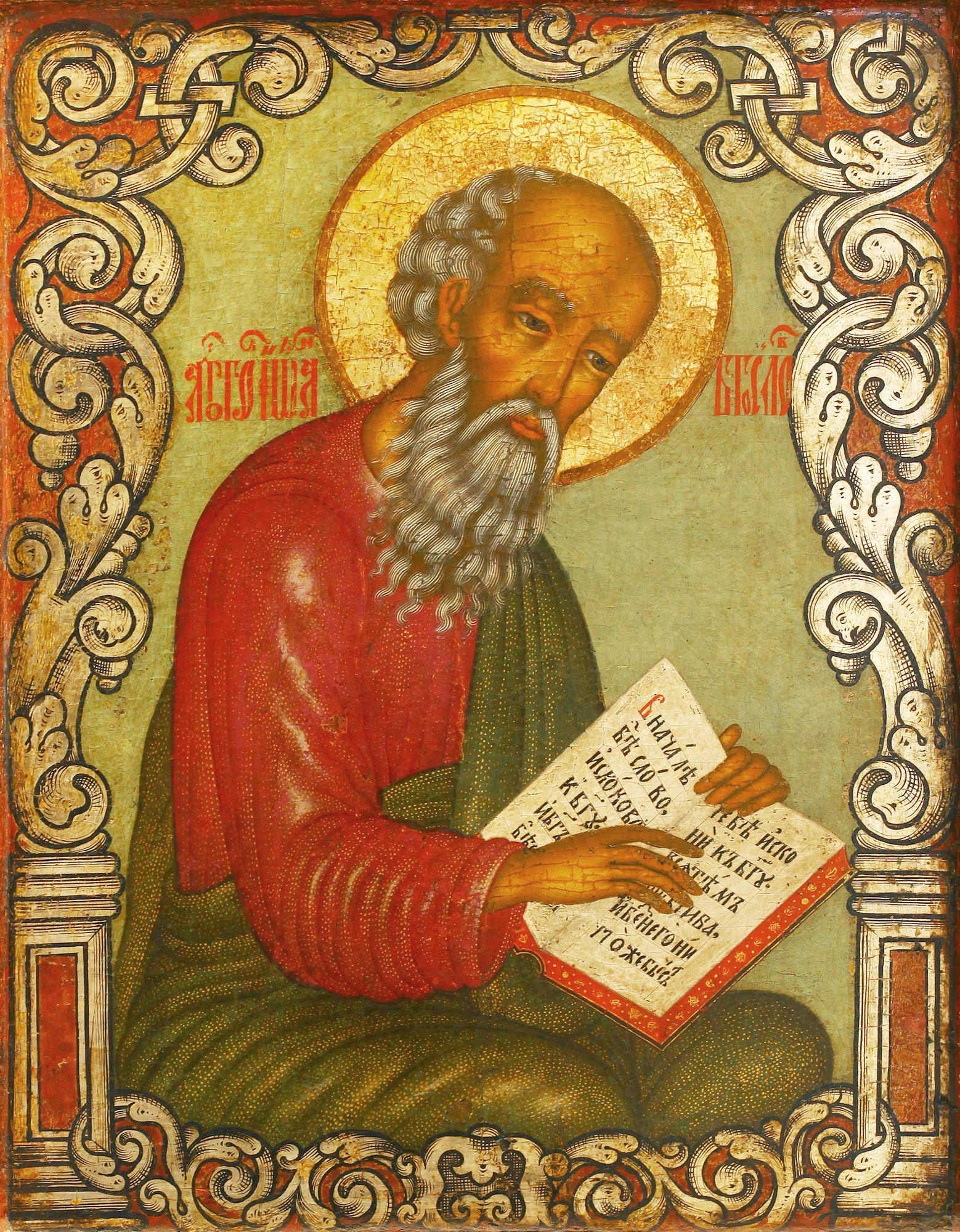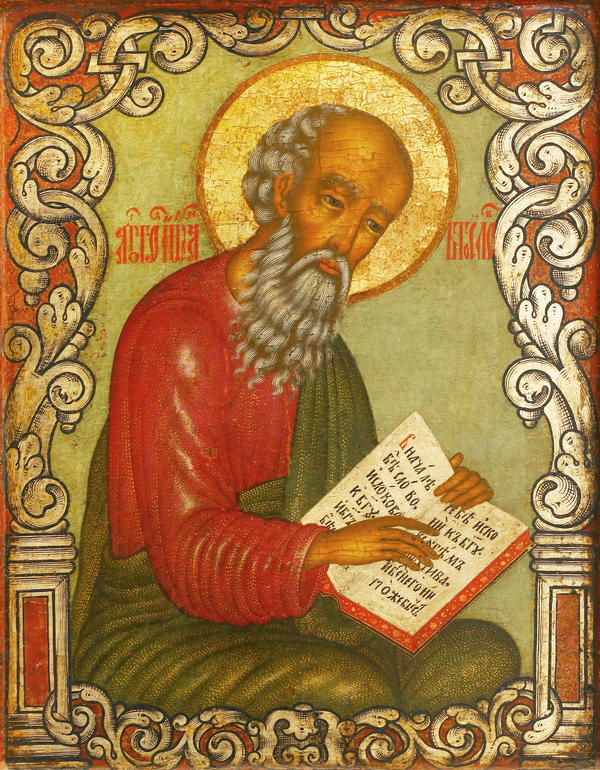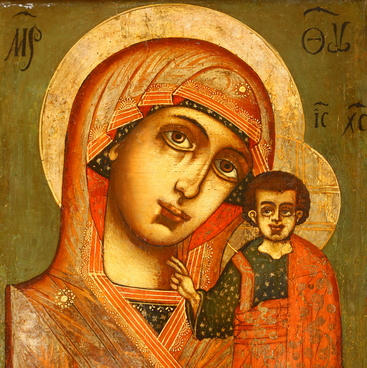The icon which is referred to the first half of the 18th century has been in the museum since 1970. St. John the Theologian -one of the twelve apostles, who created one of the canonical Gospels and the Apocalypse is depicted in it.
The image of the apostle takes nearly the whole space in the centre. St. John is sitting, turning at three quarters. The head of the evangelist is slightly bent. The icon is made in the original art style. Baroque features prevail but they are distinguished by an unusual refraction, which is a characteristic of traditional school of patriarchal icon painters and masters of the Armoury Chamber. A protruding forehead of St. John is modelled with subtle transition of tones, light and shade. The colouring is mild with light ochre and underblush. A volume image of the apostle is in contrast with repeating folds of the robe and lightening applied with pointille. These short and quick dashes of the brush sparkling in the sun decorate the cloth.
This image was painted twice. In the 18th century, the airiness of the master’s background was hidden under the blue thick tempera layer, that damaged the colouring of the painting. The iconography itself remained without changes after the first layer.
For the second time the icon was painted with oil paints. The work was made in a strict academic manner. St. John the Theologian was changed for Elijah the Prophet. The icon came for restoration under the title “Elijah the Prophet in a Desert” in 1974. Elijah against the cave was depicted in the middle of the icon. The sitting old man is leaning on a stick with an effort, in the top corners there were birds bringing food to the prophet in the desert.
The images of four apocalyptic creatures were often connected with four evangelists. Such tradition dates back to patristic interpretations, which became famous since the period of an early Christianity. It was embodied in several variants and had different interpretations.
The most common was the interpretation of Hieronymus Stridonensis (4th century), based on the peculiarities of the texts of the Gospels. He believed that the symbol of Matthew the Evangelist is an angel, who reminds the genealogy of Christ, from which the first Gospel starts. A lion was correlated by a church writer with the preaching of St. John the Baptist in the desert, from which the Gospel of Mark starts. The prophecy of Malahia from the Old Testament about “a voice crying in the wilderness” is usually connected with him.
An ox symbolised the Good News, brought to the high priest Zechariah near the altar of Jerusalem Cathedral which was described in the beginning of the Gospel of Luke. The eagle symbolized an exalted beginning of the Gospel of John.
The image of the apostle takes nearly the whole space in the centre. St. John is sitting, turning at three quarters. The head of the evangelist is slightly bent. The icon is made in the original art style. Baroque features prevail but they are distinguished by an unusual refraction, which is a characteristic of traditional school of patriarchal icon painters and masters of the Armoury Chamber. A protruding forehead of St. John is modelled with subtle transition of tones, light and shade. The colouring is mild with light ochre and underblush. A volume image of the apostle is in contrast with repeating folds of the robe and lightening applied with pointille. These short and quick dashes of the brush sparkling in the sun decorate the cloth.
This image was painted twice. In the 18th century, the airiness of the master’s background was hidden under the blue thick tempera layer, that damaged the colouring of the painting. The iconography itself remained without changes after the first layer.
For the second time the icon was painted with oil paints. The work was made in a strict academic manner. St. John the Theologian was changed for Elijah the Prophet. The icon came for restoration under the title “Elijah the Prophet in a Desert” in 1974. Elijah against the cave was depicted in the middle of the icon. The sitting old man is leaning on a stick with an effort, in the top corners there were birds bringing food to the prophet in the desert.
The images of four apocalyptic creatures were often connected with four evangelists. Such tradition dates back to patristic interpretations, which became famous since the period of an early Christianity. It was embodied in several variants and had different interpretations.
The most common was the interpretation of Hieronymus Stridonensis (4th century), based on the peculiarities of the texts of the Gospels. He believed that the symbol of Matthew the Evangelist is an angel, who reminds the genealogy of Christ, from which the first Gospel starts. A lion was correlated by a church writer with the preaching of St. John the Baptist in the desert, from which the Gospel of Mark starts. The prophecy of Malahia from the Old Testament about “a voice crying in the wilderness” is usually connected with him.
An ox symbolised the Good News, brought to the high priest Zechariah near the altar of Jerusalem Cathedral which was described in the beginning of the Gospel of Luke. The eagle symbolized an exalted beginning of the Gospel of John.



